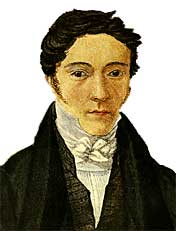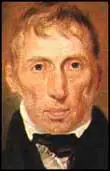This is another in a series of posts about men from history who have either achieved great things in one form or another by pushing boundaries: either in themselves or in society or science or exploration of some form. Boundary pushing and growth is what men do, it's their nature: to grow and push outwards. We, as men, are the frontiers men, the first to discover/uncover new territory, in a metaphysical sense (i.e. including both material and the immaterial) that is later colonised and 'civilised' by the rest of humanity.
 |
| Alan Turing |
Alan Mathison Turing was born on 23 June 1912, the second
and last child (after his brother John) of Julius Mathison and Ethel Sara
Turing. The unusual name of Turing placed him in a distinctive family tree of
English gentry, far from rich but determinedly upper-middle-class in the
peculiar sense of the English class system.
[..]
Until his father's retirement from India in 1926, Alan
Turing and his elder brother John were fostered in various English homes where
nothing encouraged expression, originality, or discovery. Science for him was
an extra-curricular passion, first shown in primitive chemistry experiments.
But he was given, and read, later commenting on its seminal influence, a
popular book called Natural Wonders Every Child Should Know.
His boyhood scientific interests
were a trial to his mother whose perpetual terror was that he would not be
acceptable to the English Public School. At twelve he expressed his conscious
fascination with using 'the thing that is commonest in nature and with the
least waste of energy,' presentiment of a life seeking freshly minted answers
to fundamental questions. Despite this, he was successfully entered for
Sherborne School. The headmaster soon reported: "If he is to be solely a
Scientific Specialist, he is wasting his time at a Public School." The
assessment of his establishment was almost correct.
Turing's private notes on the theory of relativity showed a
degree-level appreciation, yet he was almost prevented from taking the School
Certificate lest he shame the school with failure. But it appears that the
stimulus for effective communication and competition came only from contact
with another very able youth, a year ahead of him at Sherborne, to whom Alan
Turing found himself powerfully attracted in 1928. He, Christopher Morcom, gave
Turing a vital period of intellectual companionship — which ended with Morcom's
sudden death in February 1930.
Turing's conviction that he must now do what Morcom could
not, apparently sustained him through a long crisis. For three years at least,
as we know from his letters to Morcom's mother, his thoughts turned to the
question of how the human mind, and Christopher's mind in particular, was
embodied in matter; and whether accordingly it could be released from matter by
death.
This question led him deeper into the area of twentieth
century physics, first helped by A. S. Eddington's book The Nature of the
Physical World, wondering whether quantum-mechanical theory affected the
traditional problem of mind and matter.
Source: http://www.turing.org.uk/bio/part1.html
Turing machine
In the years after college, Turing began to consider whether
a method or process could be devised that could decide whether a given
mathematical assertion was provable. Turing analyzed the methodical process,
focusing on logical instructions, the action of the mind, and a machine that
could be embodied as a physical form. Turing developed the proof that automatic
computation cannot solve all mathematical problems. This concept became known as
the Turing machine, which has become the foundation of the modern theory of
computation and computability. Turing
took this idea and imagined the possibility of multiple Turing machines, each
corresponding to a different method or algorithm. Each algorithm would be
written out as a set of instructions in a standard form, and the actual
interpretation work would be considered a mechanical process. Thus, each
particular Turing machine embodied the algorithm, and a universal Turing
machine could do all possible tasks. Essentially, through this theorizing,
Turing created the computer: a single machine that can be turned to any
well-defined task by being supplied with an algorithm, or a program.
Turing moved to the United States to continue his graduate
studies at Princeton. He worked on algebra and number theory, as well as a
cipher machine based on electromagnetic relays to multiply binary numbers. He
took this research back to England with him, where he secretly worked part time
for the British cryptanalytic department. After the British declared war in
1939, Turing took up full-time cryptanalytic work at Bletchley Park.
Enigma code
Turing made it his goal to crack the complex Enigma code
used in German naval communications, which were generally regarded as unbreakable.
Turing cracked the system and regular decryption of German messages began in
mid-1941. To maintain progress on code-breaking, Turing introduced the use of
electronic technology to gain higher speeds of mechanical working. Turing
became an invaluable asset to the Allies, successfully decoding many German
messages. By the end of the war, Turing
was the only scientist working on the idea of a universal machine that could
plug into the potential speed and reliability of electronic technology. This
led to the development of early hardware and the implementation of arithmetical
functions by programming, and thus, computer science was born. Turing became
well-regarded by the scientific community, as the director of the computing
laboratory at Manchester University and an elected fellow of the Royal Society.
Turing test
Turing was also involved in philosophical debates over
whether machines could think like a human brain. He devised a test to answer
the question. He reasoned that if a computer acted, reacted and interacted like
a sentient being, then it was sentient. [Related: What is The Singularity?]
In this simple test, an interrogator in isolation asks
questions of another person and a computer. The questioner then must
distinguish between the human and the computer based on their replies to his
questions. If the computer can "fool" the interrogator, it is
intelligent. Today, the Turing Test is at the heart of discussions about
artificial intelligence.
Gross indecency
Turing had never been secretive about his homosexuality. He
was outspoken and exuberant about his lifestyle, openly taking male lovers.
When police discovered his sexual relationship with a young man, he was
arrested and came to trial in 1952. Turing never denied or defended his actions,
instead asserting that there was nothing wrong with what he did. The courts
disagreed, and Turing was convicted of gross indecency. In order to avoid
prison, Turing had to agree to undergo a series of estrogen injections.
He continued his work in quantum physics and in
cryptanalytics, but known homosexuals were ineligible for security clearance.
Bitter over being turned away from the field he had revolutionized, Turing
committed suicide in 1954 by ingesting cyanide.
In 2009, Prime Minister Gordon Brown publicly apologized for
how the scientist was treated. And in December 2013, Queen Elizabeth II
formally pardoned Turing. A British government statement said, "Turing was
an exceptional man with a brilliant mind" who "deserves to be
remembered and recognized for his fantastic contribution to the war effort and
his legacy to science."
It is occasionally important to note the reasons, the motives, the life experiences behind the discoveries that men make: the personality traits, the pertinent life experiences, the emotions that they experience, and so on. Looking at Alan Turing’s early life, his love for mathematics was driven by a love for knowing, understanding, the world, and the mechanics that underlies it. Simple intuitive questions really. True learning comes from inquisitiveness and enjoying whatever it is that one does, the subject matter is secondary. Frank Whittle learnt about flight from playing with model aircraft, and Benjamin Franklin learnt about electricity from playing with kites. Men can learn from anything. Enjoyment comes first, whilst the field or subject matter that they learn it from are secondary really. Reading all of the theories in the world won’t help a man to understand the world unless his
Will to understand the world comes first. Schopenhauer pointed this out in his essay ‘On Thinking for Oneself':
Men of learning are those who have done their reading in the pages of a book. Thinkers and men of genius are those who have gone straight to the book of Nature; it is they who have enlightened the world and carried humanity further on its way. If a man’s thoughts are to have truth and life in them, they must, after all, be his own fundamental thoughts; for these are the only ones that he can fully and wholly understand.
Source: http://insomnia.ac/essays/on_thinking_for_oneself/
The will to understand the world is a personal action (i.e. in a bedroom rather than a classroom, in quiet rather than in debate) that grows by enjoyment and inquisitiveness.
It’s also important to note that during his childhood his teachers rated him as only ‘average to good’ and that
‘[h]e was criticised for his handwriting, struggled at English, and even in mathematics he was too interested with his own ideas to produce solutions to problems using the methods taught by his teachers.’ (
Source). Isaac Newton was also a weak child who performed poorly at school, yet look what he went on to achieve. This tells us a few things:
- That teachers aren’t all that hot at spotting geniuses.
- That great intellectuals can be model students who learn quickly (like Mozart and John Stuart Mill, who learnt to play the piano and Latin respectively while still toddlers) or average students who learn slowly (like Turing and Newton).
- That personal enjoyment and inquisitiveness (or curiosity if you like) trump rote-learning any day of the week.
So if you or someone you know is rated as 'average' or 'moderate' by men of learning (teachers, doctors, professors, and other academia dwellers) think nothing of it, because they don't have a great track record of identifying first-rate minds. Just keep on trucking and enjoying what you do, just like Alan Turing did.
[End.]



